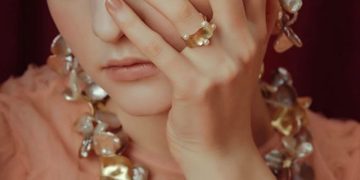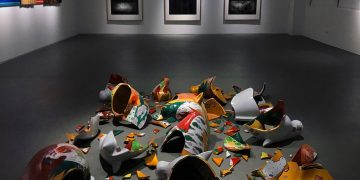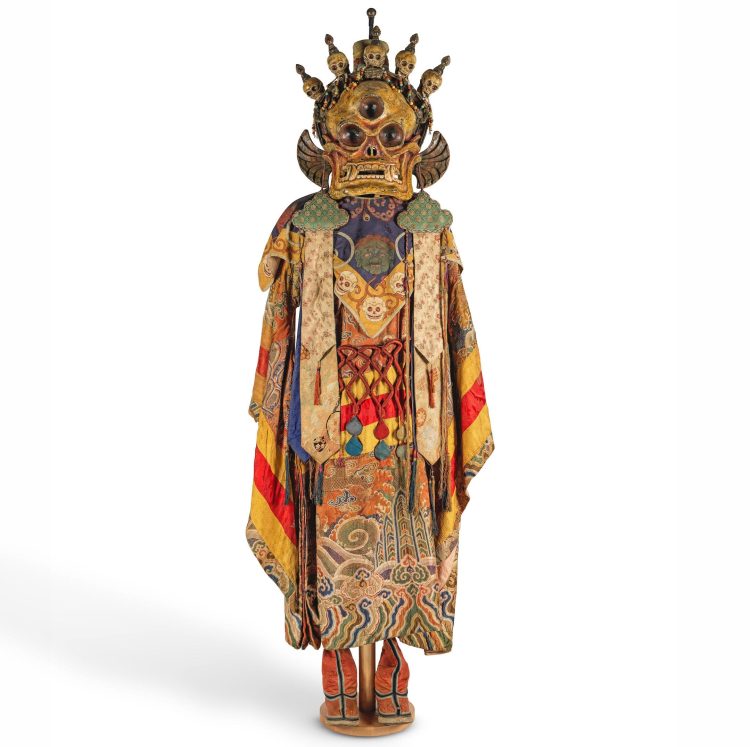Lot 118: The Oracle Mirror
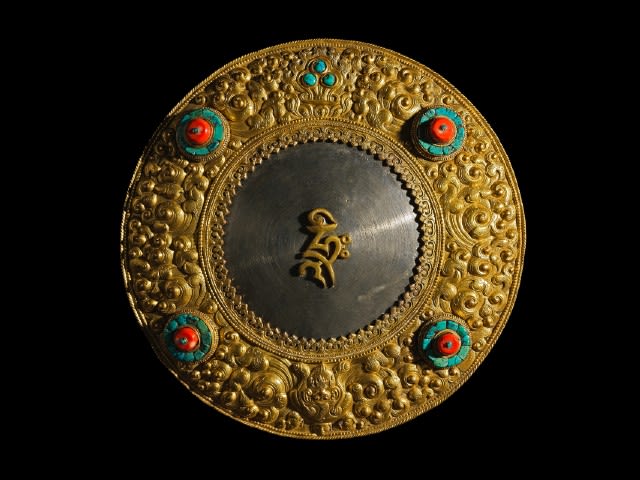
An oracle mirror is used in the tantric practice of divination and is worn by the appointed oracle who goes into a trance to make forecasts of future events. The actual rituals and the associated iconography still remain rather vague, though it seems it originates from early indigenous Central Asian practices which became popular during the 17th century under the government-supported cult of the Nechung State Oracle of Tibet.
At the center is the seed syllable for Amitabha ‘hrih’ that invokes the ‘Buddha of Infinite Radiance’ and the fine quality of the detailed repousse work is perfectly complimented by the bold embellishments of coral and turquoise representing the ‘four noble truths’. This is an especially fine example that has been included in some of the most important exhibitions and publications devoted to ritual Himalayan Art over the past 30 years.
Lot 133: The Polychrome Figure of Vajrabhairava
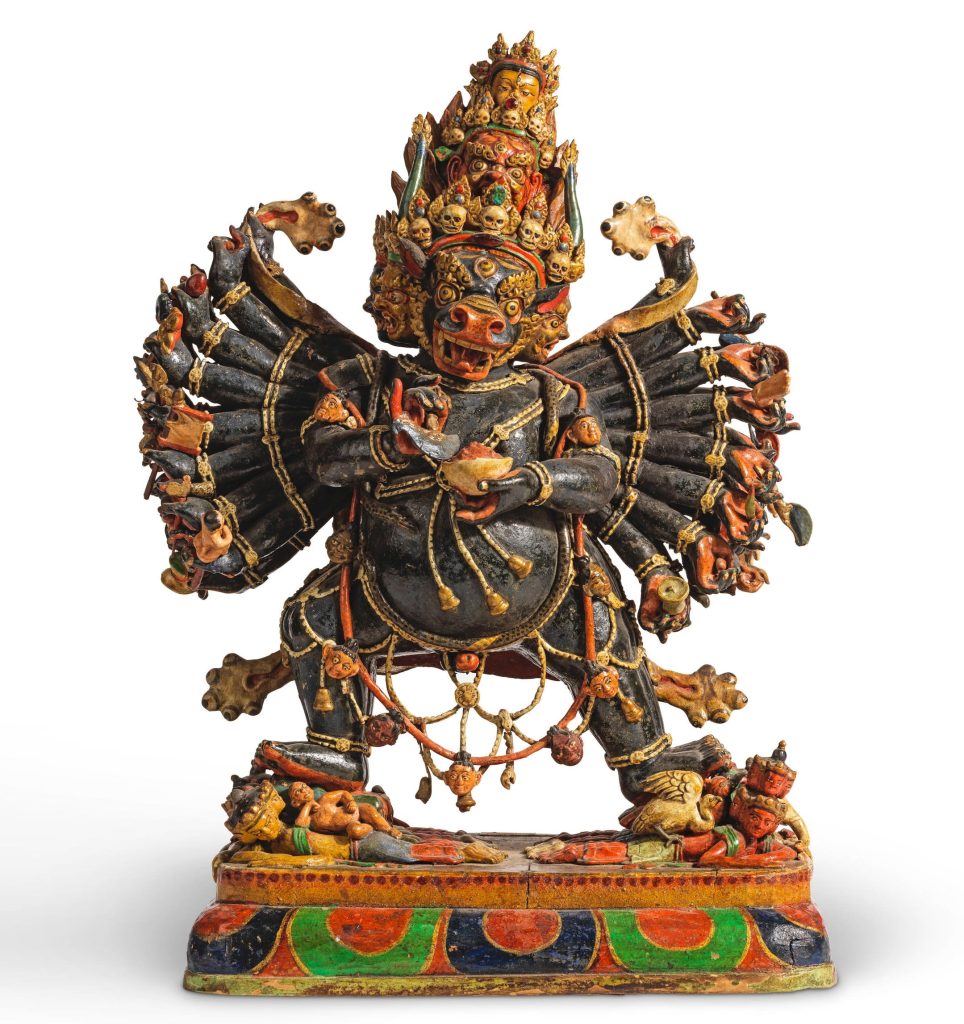
The Tibet Buddhist pantheon of deities are rich and complex. This striking representation of Vajrabhairava Ekavira is executed in painted terracotta and wood in exquisite detail. It was acquired from Spink and Son in London in 1991 and has remained one of the prized sculptures within the Triay Collection.
When Yama, Lord of Death, was ravaging Tibet, the people invoked, the boddhisattva, Manjushri for help. He assumed the form of Yamantaka (Conqueror of Death – also known as Vajrabhairava) and subdued Yama, making the latter a Regent of Hell. As the deputy of Manjushri, Vajrabhairavais known as the “discerning protector”.
Lot 150: The Figure of Hayagriva

This elaborate gilt-bronze represents a meditational deity (yidam) rarely seen in Tibetan sculpture known as Black Hayagriva, identified by the horse’s head emerging behind the crown and notably, for his layered silk robe. Remarkable for its liveliness and depth of composition, this figure was likely intended to be placed within a gau, or a shrine inside a home or temple for personal worship.
By contrast to the Vajrabhairava (lot 133) this compact presentation of the deity Hayagriva packs in all the details in a much smaller scale. The artist has used silver to define the shafts of the weapons he brandishes, and the prominent inset turquoise highlights his elaborate jewellery. Worked in similar detail at the back and the based is sealed by a gilded plate to secured and project the consecration materials contained within the sculpture.
Lot 159: The Mounted Mask of a Wrathful Deity

This is one of the most powerful and dramatically rendered Tibetan dance masks to appear on the market. Indicative of his skill hand, the artist has imbued a mesmerizing alertness and intensity to the mask’s piercing eyes beneath flaming eyebrows emblazoned in gold and his mass of wild hair is from a yak. Masks such as this extraordinary example were worn by monks and used in Cham dance performances during religious festivals, such as Saga Dawa, that commemorates the Birth, Enlightenment and Parinirvana of Buddha.
There is variance in iconography with the buffalo-head that is most commonly associated with Yama, the lord of Death. In the capacity of Vajrabhairava, Yama is a manifestation of Manjushri, the fierce archetype of wisdom’s triumph over death, expelling the forces adverse to law and goodness.
Costumes such as these were used during ritual Cham dances, a practice involving narrative re-enactments meant to both story tell and invoke deities. Initially originating in Tibet, Cham became a practice that covered large areas of the Himalayas. Held during ceremonial festivities at local monasteries, monks wearing these costumes were understood to be invoking the spirit of the costume they adorned. Cham costumes were elaborate and consist of large papier-mâché masks, fine silk with appliqué and embroidery, and decorative footwear. Coupled with sounds of trumpets, cymbals and drums these coordinated dances displayed a dramatic and spirited portrayal of ritual deity invocation. Wearing the chitipati costume would have served to supplicate the protective energies associated with these skeletal beings and provoked reminders of the impermanence of all things.















